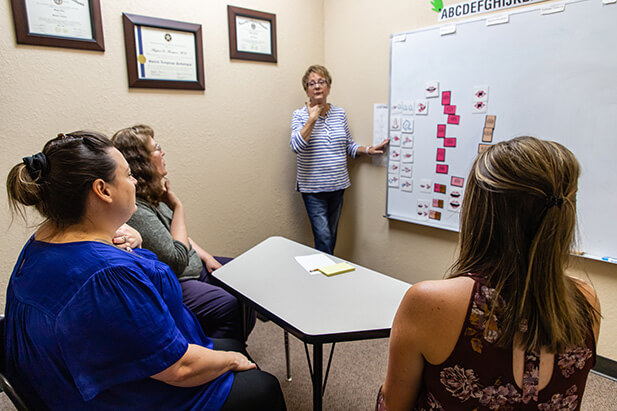
Effective teaching and educational intervention is an imperative part of teaching an individual with dyslexia how to read. The International Dyslexia Association (IDA) widely promotes the use of a Structured Literacy, multisensory approach to teaching reading. This means the curriculum used in the classroom and in reading intervention should teach the science behind reading in a way that involves all of the senses. This instruction method is also often referred to as the Orton-Gillingham approach.
What is taught in a Structured Literacy evidence-based approach?
- Phonological Awareness
- Sound-Symbol Association
- Syllable Instruction
- Morphology
- Syntax
- Semantics
The International Multisensory Structured Language Education Council (IMSLEC), an IDA partner agency, sets standards for quality multisensory curricula and certifies institutions who are meeting the best practice standards to teaching reading.
How is a multisensory approach taught?
- Simultaneous, Multisensory – Teaching incorporates all language learning pathways in the brain (visual, auditory, kinesthetic-motor [tactile]) simultaneously to enhance memory and learning.
- Systematic & Cumulative – follows the logical structure of language by starting with the basic concepts and moving on the more complex ones.
- Direct Instruction – every concept is taught, no matter how “obvious” it may be
- Individualized – instruction is prescriptive based on the continuous assessment of a students grasp of concepts.
- Synthetic and Analytic – shows how parts of language come together to form a whole and how language as a whole can be broken down into different components.

